“Ben Is Back” (2018). Cast: Julia Roberts, Lucas Hedges, Courtney B. Vance, Kathryn Newton, Tim Guinee, Michael Esper, Rachel Bay Jones, David Zaldivar, Kristin Griffith, Mia Fowler, Jakari Fraser, Alexandra Park, Jack Davidson, Jeff Auer, Henry Stram, Nigel the dog. Director: Peter Hedges. Screenplay: Peter Hedges. Web site. Trailer.
The hell of drug addiction wears heavily on those afflicted by it. The physical and psychological effects alone can be devastating, but all of the other related effects – socially, economically and otherwise – can be just as destructive. And, when the impact on those close to an addict is added into the mix, the result can be just as catastrophic (and in virtually all of the same respects). But redemption is possible, difficult though it may be to achieve. So it is with a family dealing with such a crisis in the gripping and moving new drama, “Ben Is Back.”
Nineteen-year-old Ben Burns (Lucas Hedges) wants to spend Christmas with his family, but there’s just one problem – he needs to get approval to visit them from the rehab program where he’s enrolled to treat his drug addiction. He’s made progress at getting better, but he’s only been in treatment for a few months, and his counselors aren’t sure if he’s ready to go back to where his problem arose. The ghosts of his past, as well as the omnipresent threat of temptation, could derail his efforts and lead to a backslide. But, despite the risk, he makes the journey home to see his mother, Holly (Julia Roberts), his stepdad, Neal (Courtney B. Vance), his sister, Ivy (Kathryn Newton), and his step-siblings, Lacey (Mia Fowler) and Liam (Jakari Fraser). He also looks forward to seeing his pet dog, Ponce (Nigel the dog), who saved Ben’s life by finding him when he overdosed and nearly died, the event that led to his stint in rehab.
Needless to say, the family is surprised by Ben’s unexpected visit. Holly, Lacey and Liam are thrilled to see him, as is Ponce. Neal and Ivy, however, have their doubts. And, as the details of Ben’s past are gradually revealed during his stay, they’re justified in their skepticism. Even though he’s receiving treatment, his track record of behavior before he entered rehab was quite checkered. As both a user and a dealer, he dragged many others into his dark world, in some cases with catastrophic consequences. It’s no wonder that his sister and stepdad are wary.
[caption id="attachment_10361" align="aligncenter" width="300"] Recovering addict Ben Burns (Lucas Hedges, right) and his concerned mother, Holly (Julia Roberts, left), face 24 harrowing hours while the teen is home for a visit from rehab in the gripping new drama, “Ben Is Back.” Photo by Mark Shafer, courtesy of LD Enterprises and Roadside Attractions.[/caption]
Recovering addict Ben Burns (Lucas Hedges, right) and his concerned mother, Holly (Julia Roberts, left), face 24 harrowing hours while the teen is home for a visit from rehab in the gripping new drama, “Ben Is Back.” Photo by Mark Shafer, courtesy of LD Enterprises and Roadside Attractions.[/caption]
Outwardly, Holly is happy to have her son home, and she tries to put a cheery face on the situation. But, despite the appearance of unconditional motherly love and boundless support, she’s no fool, either. She knows full well what Ben is capable of, and, when she needs to take a hard stand with him, she knows what to do. Her stern side surfaces after a heated discussion with Neal, who strongly disapproves of Ben’s visit and wants to return him to his treatment facility. So, after Holly and Neal agree to a compromise of a 24-hour stay, she promptly lays down the law about the conditions of Ben’s stay. Her direct, no-nonsense explanation is full of strings, including a drug test, never leaving her sight and facing an immediate return to rehab for any violation of her terms.
To feel as though he’s fully engaged as part of the family’s holiday celebration, Ben asks Holly if she could take him Christmas shopping at the local mall, to which she agrees. However, while there, Ben encounters two old acquaintances from his drug days, as well as the physician (Jack Davidson) who, in prescribing painkillers to treat a 14-year-old Ben for a snowboarding injury, provided the springboard for his life of addiction.
The stress of these incidents is so overwhelming that Ben insists Holly take him to a local Narcotics Anonymous meeting to help ground himself. The gathering provides some comfort, but it also leads to another difficult encounter with a young woman (Alexandra Park) who’s planning to get clean but who wants to get high one last time, an invitation she extends to Ben. He’s curious why she would ask him, of all people, to join her for this, a response that surprises her, particularly when she reminds him that he used to be her dealer, something he completely forgot.
[caption id="attachment_10362" align="aligncenter" width="300"] Concerned parents Holly (Julia Roberts, foreground) and Neal (Courtney B. Vance, background) worry about their recovering addict son while he’s home from rehab for a Christmas holiday visit in director Peter Hedges’s latest offering, “Ben Is Back.” Photo by Mark Shafer, courtesy of LD Enterprises and Roadside Attractions.[/caption]
Concerned parents Holly (Julia Roberts, foreground) and Neal (Courtney B. Vance, background) worry about their recovering addict son while he’s home from rehab for a Christmas holiday visit in director Peter Hedges’s latest offering, “Ben Is Back.” Photo by Mark Shafer, courtesy of LD Enterprises and Roadside Attractions.[/caption]
By now, it’s apparent that going home might not have been a good decision after all. What’s more, the incident at the N.A. meeting raises Holly’s doubts, seriously stretching her trust that Ben is genuinely able to keep his word. She subsequently tightens the leash, insisting that he follow her dictates to the letter, including her requirement that he join the family in attending a Christmas Eve church service where Ivy will be a featured soloist and Lacey and Liam will participate in a nativity pageant. It’s an experience that, fortunately, provides Ben with some much-needed solace after such a rough day. But the peace of the season is shattered when the family returns home from church to find their house ransacked – and Ponce missing.
After a thorough search of the home, it doesn’t appear that anything was stolen, but Ponce’s disappearance is out of character for the otherwise-well-behaved pooch. Ben concludes that the dog was taken, most likely by someone from his past who knows he’s back in town, a gesture meant to send a message. And, given that Ponce was the one who found Ben when he nearly died, the choice of taking the family pet now was meant to hit him where it hurts most. Upon this realization, Ben storms off to find the dog that he and the rest of the family so lovingly adore.
Of course, by leaving, Ben violates the conditions of his stay, so Holly goes after him in hot pursuit. When she finds him, he tries to send her away, contending that, as well as she thinks she knows him, she doesn’t really know him at all – and everything that he was capable of in his past. Holly hangs tough, though, vowing to help Ben in his search to find out who took the dog. Thus begins a descent into the world of Ben’s past. This journey into the seamy drug underworld includes encounters with one of Ben’s former (and highly unscrupulous) high school teachers (Henry Stram), the parents of one of his deceased clients (Rachel Bay Jones, Jeff Auer), one of his former junkie cohorts (David Zaldivar) and a notorious kingpin pusher (Michael Esper), the most likely candidate for having abducted Ponce. And, as this scenario plays out, it appears that getting the dog back will require a Herculean effort – for both Ben and Holly – a task that carries risks for success and their very survival.
[caption id="attachment_10363" align="aligncenter" width="300"] A Christmas Eve church service provides solace to troubled recovering addict Ben Burns (Lucas Hedges, center) while in the company of his mother, Holly (Julia Roberts, right), and stepdad, Neal (Courtney B. Vance, left), in “Ben Is Back.” Photo by Mark Shafer, courtesy of LD Enterprises and Roadside Attractions.[/caption]
A Christmas Eve church service provides solace to troubled recovering addict Ben Burns (Lucas Hedges, center) while in the company of his mother, Holly (Julia Roberts, right), and stepdad, Neal (Courtney B. Vance, left), in “Ben Is Back.” Photo by Mark Shafer, courtesy of LD Enterprises and Roadside Attractions.[/caption]
These are circumstances no one would envy. So the question that comes up, of course, is how did these characters find themselves in such dire straits?
At the risk of sounding glib, flippant or uncaring, Ben, Holly, and the rest of their family and cohorts are going through this scenario because they drew the circumstances to them through the conscious creation process, the philosophy that maintains we manifest the reality we experience through the power of our thoughts, beliefs and intents. But why on earth, you might ask, would anyone want to create such horrific conditions for themselves? Unfortunately, there are no easy answers to this question.
Whatever we experience (or endure) in life is a highly personal matter, based on the particular beliefs we each hold. And, as outsiders, it’s not our place to judge what transpires for others, for those who create these circumstances have their own reasons for doing so, no matter how unpleasant or unbearable they may seem to us. It’s their experience to go through, for better or worse.
[caption id="attachment_10364" align="aligncenter" width="300"] While attending a Narcotics Anonymous meeting, recovering addict Ben Burns (Lucas Hedges, center) impresses his mother, Holly (Julia Roberts, background), with the progress he’s made in getting clean, as seen in the new family drama, “Ben Is Back.” Photo by Mark Shafer, courtesy of LD Enterprises and Roadside Attractions.[/caption]
While attending a Narcotics Anonymous meeting, recovering addict Ben Burns (Lucas Hedges, center) impresses his mother, Holly (Julia Roberts, background), with the progress he’s made in getting clean, as seen in the new family drama, “Ben Is Back.” Photo by Mark Shafer, courtesy of LD Enterprises and Roadside Attractions.[/caption]
When challenging conditions arise in someone’s life, in most cases they have to do with learning some kind of significant life lesson, including those that are difficult and that challenge us to cope with them. In many instances, this may be hard to fathom, even by those who materialize them, especially when they’re characterized by particularly onerous aspects. But such hardships often serve as valuable learning opportunities for understanding certain basic truths about the nature and qualities of existence.
For example, dicey situations frequently push us to get creative in coming up with workable solutions. They urge us to look past accepted limitations and preconceived notions, to think in terms we ordinarily might not. This is especially true in scenarios like the one Ben and Holly face. As becomes apparent, tried and true methods of coping with these circumstances simply won’t suffice, so they have to think in unconventional terms to resolve these issues.
In line with that, thinking outside the box also helps us realize that, in all situations, no matter how daunting or seemingly restrictive they may appear, we always have the power of choice at our disposal. In fact, recognizing, appreciating and utilizing this capability may prove to be our saving grace when things get tough and innovative solutions are called for. Ben and Holly discover this for themselves when going through their respective and collective ordeals, and, if they hope to survive them, they had better be prepared to make the most of their options, especially those that mean seem unavailable.
[caption id="attachment_10365" align="aligncenter" width="300"]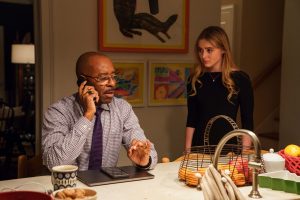 Skeptical stepdad Neal (Courtney B. Vance, left) and sister Ivy (Kathryn Newton, right) have doubts about the behavior of a family member recovering from drug addiction when he mysteriously disappears in director Peter Hedges’s latest, “Ben Is Back.” Photo by Mark Shafer, courtesy of LD Enterprises and Roadside Attractions.[/caption]
Skeptical stepdad Neal (Courtney B. Vance, left) and sister Ivy (Kathryn Newton, right) have doubts about the behavior of a family member recovering from drug addiction when he mysteriously disappears in director Peter Hedges’s latest, “Ben Is Back.” Photo by Mark Shafer, courtesy of LD Enterprises and Roadside Attractions.[/caption]
At this point, though, one still might ask, how can such difficulties exist? It’s because the conscious creation process makes all options possible, from the happiest of endings to the most devastating of tragedies. The choice (there’s that word again) is up to us and what we seek to manifest, based on the reasons behind the hoped-for outcomes and the materializing beliefs that make them happen. One can only hope that we make the most of our opportunities and that we learn from the lessons that we seek to get. Such expanded awareness can aid significantly in the development of our personal growth, providing us with new capabilities and insights into the workings of reality, tools that we can employ in the creation of subsequent scenarios and experiences.
For what it’s worth, adversities like those that Ben and Holly undergo often are the best teachers, counterintuitive as that may seem. However, because their impact tends to be so strong and so pervasive, they frequently nudge us into expanding existing abilities or developing entirely new ones. This may be difficult to endure, but the associated growing pains usually pay off in the long run, despite the discomfort we experience when we go through such situations. We might not appreciate the benefits to come from them at the time, but, when we look back in hindsight and assess what they’ve made possible, we generally acknowledge that we wouldn’t have changed a thing, proof that what doesn’t kill us often makes us stronger. I’m sure Ben and Holly would concur with that, even if they might have heartily disagreed at the time.
This gripping film, which effectively combines a family drama with an edgy deep dive into a sinister subculture, reveals what it means to try and come back from a life and legacy fraught with baggage that resists letting go. For Ben, it requires walking a tightrope of seeking forgiveness while trying to let go of guilt, changing his dubious behavior, and fighting off the constant temptation that could easily undo all of his hard work to get clean and make amends. For those who care for him, it also requires traversing a high wire of being lovingly supportive yet skeptically vigilant, far from an easy balance to strike. And, no matter how hard everyone works at these issues, there’s always the threat that outside forces could interfere to undermine, or even negate, whatever progress has been made. It’s a challenge most of us would likely want to avoid at all costs.
[caption id="attachment_10366" align="aligncenter" width="300"] A moment of crisis draws a strong emotional response from recovering addict Ben Burns (Lucas Hedges, right) while on a visit to a cemetery with his mother, Holly (Julia Roberts, left), in “Ben Is Back.” Photo by Mark Shafer, courtesy of LD Enterprises and Roadside Attractions.[/caption]
A moment of crisis draws a strong emotional response from recovering addict Ben Burns (Lucas Hedges, right) while on a visit to a cemetery with his mother, Holly (Julia Roberts, left), in “Ben Is Back.” Photo by Mark Shafer, courtesy of LD Enterprises and Roadside Attractions.[/caption]
Nevertheless, these are the circumstances in which the principals find themselves, and, if they ever hope to change them, they must do their best to cope with and seek resolution to the conditions they now face. It won’t be easy, but, considering the situation in which they find themselves, that comes with the territory. How well they succeed – if at all – depends on their resolve to see things through, to realize that change is possible, even if difficult to achieve.
One would hope that the redemption sought after in cases like this is indeed achieved. To make that happen, though, beliefs related to that goal must be established. This requires envisioning the formation, implementation and activation of thoughts and intents that make such an outcome attainable – the quest for forgiveness (including for oneself), the promise to reform one’s behavior, the release of guilt, the ability to resist temptation and the gratitude for seeing such results realized. These can be tough nuts to crack, but they’re far from insurmountable, especially when we have faith – in itself a belief – that they’re wholly achievable. The feelings that arise from such efforts can be renewing, enlightening and uplifting, offering us the chance of a new beginning – and a brilliant and bright future.
After seeing “Ben Is Back,” I couldn’t help but wonder why it’s being ignored (and, in some cases, unfairly bashed) by critics. Director Peter Hedges’s latest is easily one of the best offerings of the year, featuring a well-integrated fusion of family saga and thriller. Roberts and Hedges turn in knock-out performances worthy of awards consideration for their range of emotion and powerful delivery, and the picture’s well-crafted screenplay serves up an excellent mix of heartfelt emotion, gritty intensity, shocking revelation, pointed comic relief and deftly nuanced subtlety. Sadly, this appears to be one of those releases that’s simply going to be overlooked for honors and accolades, and that’s truly unfortunate, as this is quite an unexpected gem.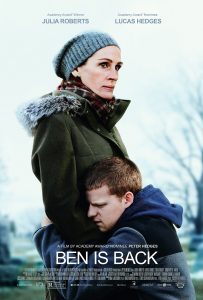
Three other points are worth mentioning. First, there have been a number of comparisons between this release and another offering about teenage drug addiction, “Beautiful Boy,” which was released earlier this fall. Some have tried to claim that “Ben Is Back” is a little more than a knock-off of its predecessor, but that’s a highly unfair comparison. True, both films deal with the same subject matter, but that’s about where the similarities end. “Beautiful Boy” is based on a true story, while “Ben Is Back” is a work of fiction. In addition, the former deals almost exclusively with the protagonist’s recurring stints in rehab over time and his parents’ attempts to get their son clean, while the latter is set over a compressed time frame and addresses all of the fallout that can accompany drug addiction beyond the obvious physical and psychological health considerations. Trying to say that these films are copycats of one another is simply a lazy comparison.
Moreover, this is the second role in as many months featuring Hedges as a teen in crisis, the first having been “Boy Erased” about the gay son of a fundamentalist preacher who undergoes conversion therapy in an attempt to turn straight. The young actor has earned considerable praise for that portrayal, including a Golden Globe Award nomination for best male performance in a drama. However, as good as Hedges is in that film, his work here is arguably even better, given that he’s required to show a greater range of emotion and to engage in a wider array of actions and activities. While his performance in “Boy Erased” is certainly noteworthy, it’s unfortunate that his portrayal here isn’t receiving commensurate recognition.
And then there’s Julia Roberts, who delivers one of the best – and most overlooked – performances of her career. As Holly, Roberts must straddle the fine line between tough love and unconditional love. The range of emotion required in that is extensive, one that routinely calls for her to vacillate between being scolding and being nurturing. In many ways, this role reminds me of her work in “August: Osage County” (2013), in which she alternated between playing caretaker and taskmaster to her terminally ill mother and her functionally challenged family. She builds on that characterization here as a mother who must do the same for a son in crisis whom she wants to trust but must ever remain suspect about as he seeks to turn his life around.
When someone goes through, or attempts to recover, from the debilitating effects of drug addiction, the challenges in getting clean can at times be seemingly insurmountable. The possibility of everything unraveling, even in the face of progress, always looms in the background. But then there’s also the possibility of hope, that matters can be worked out and restored to what existed before such ordeals arose. This truly is one of those situations where those affected need to hope for the best but prepare for the worst. And, with the right support, lots of love and a stern resolve, circumstances can be rectified. For all of those going through such suffering, be it directly or on the sidelines, here’s to your every success.
Copyright © 2018, by Brent Marchant. All rights reserved.
Friday, December 21, 2018
‘Ben Is Back’ explores the quest for redemption
Wednesday, December 19, 2018
This Week in Movies with Meaning
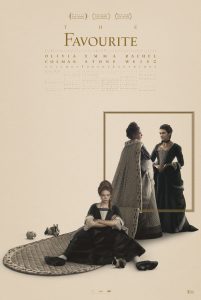

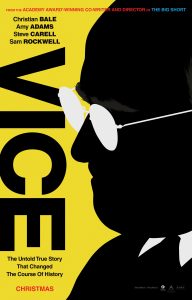

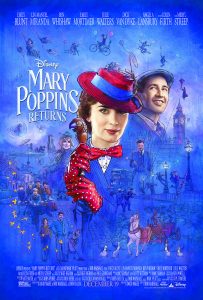
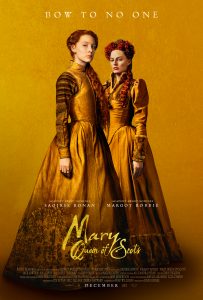
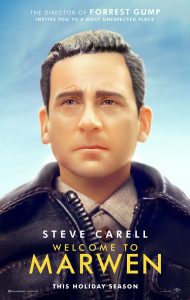


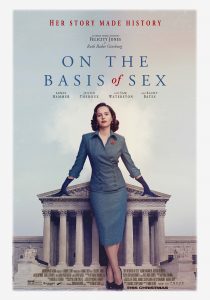

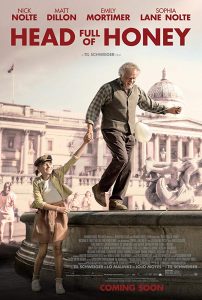
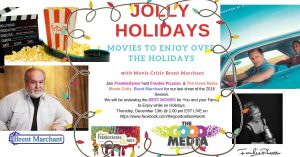

Thursday, December 13, 2018
Jolly Holidays at the Movies!
Join host Frankie Picasso and me for the next edition of Movies with Meaning on The Good Media Network’s Frankiesense & More broadcast, today, December 13, at 1 pm ET. We’ll discuss a number of new movie releases, as well as preview some awards season contenders getting ready for release during the upcoming holidays. For the video version, tune in on Facebook Live by clicking here. And, for the audio only podcast edition, check out The Good Media Network’s home page by clicking here. Join us for a Santa’s bag full of fun movie chat!

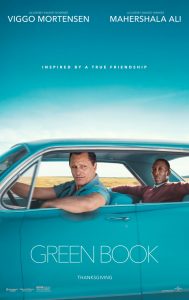
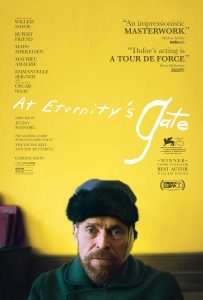



Wednesday, December 12, 2018
‘The Favourite’ tackles how to get (or not get) one’s way
“The Favourite” (2018). Cast: Olivia Colman, Emma Stone, Rachel Weisz, Nicholas Hoult, James Smith, Joe Alwyn, Mark Gatiss. Director: Yorgos Lanthimos. Screenplay: Deborah Davis and Tony McNamara. Web site. Trailer.
We all love to get our way. It’s fulfilling when we see our wishes come to fruition, often leaving us with a warm, satisfied glow inside. But how we get there can be challenging, especially if we find ourselves pushing too hard to see the desired result realized. So it is with a beleaguered monarch and her two closest but contentious advisors in the new period piece dark comedy, “The Favourite.”
In 18th Century England, Queen Anne (Olivia Colman) rules – or attempts to rule – her empire in the face of many public and personal challenges. Officially speaking, the capricious, tempestuous monarch is charged with overseeing the country’s war efforts against pesky continentals (most notably the French), although she’s often clueless as to the status of the conflict. She’s also responsible for figuring out how to pay for the military campaign, a quandary that frequently embroils her in the midst of an ongoing battle between opposing forces in Parliament pitting the ruling Tories, led by Lord Godolphin (James Smith), against the power-seeking Whigs, under the stewardship of Lord Harley (Nicholas Hoult). And she must contend with the ire of the land-owning gentry, who rail at attempts to raise taxes to raise revenue for the war effort. It’s a lot to handle for someone who’s easily befuddled and more interested in indulging her self-indulgent whims than addressing the affairs of state.
[caption id="attachment_10328" align="aligncenter" width="300"] Lonely and in declining health, England’s Queen Anne (Olivia Colman) wrestles with a host of personal problems as she attempts to rule her empire in the new historical dark comedy, “The Favourite.” Photo by Yorgos Lanthimos, © 2018 Twentieth Century Fox Film Corporation.[/caption]
Lonely and in declining health, England’s Queen Anne (Olivia Colman) wrestles with a host of personal problems as she attempts to rule her empire in the new historical dark comedy, “The Favourite.” Photo by Yorgos Lanthimos, © 2018 Twentieth Century Fox Film Corporation.[/caption]
Personally, the Queen has more than a full plate of issues. Her health is failing in many ways, a problem that has been unfolding both physically and psychologically for years. She’s also lonesome, given that she’s been widowed and has suffered the deaths of 17 children lost through miscarriages, stillbirths and various forms of early demise. And, when she doesn’t get her way, even in the simplest of matters, she often flies into a hysterical, uncontrollable rage, followed by bouts of prolonged, inconsolable whimpering.
Fortunately, Her Majesty is not without sources of comfort. Her doting, ever-attendant companion, Lady Sarah (Rachel Weisz), is constantly by her side, offering reassurance and guidance, even if providing such comfort means being less than truthful. In return for such “kindness,” the Queen rewards her confidante handsomely, both in her personal affairs and the public agendas she clandestinely seeks to promote (or, more precisely, seeks to skillfully manipulate into being). And, most of the time, the Queen falls for her companion’s carefully orchestrated schemes.
[caption id="attachment_10329" align="aligncenter" width="300"] Lady Sarah (Rachel Weisz, left) seeks to curry favor with England’s Queen Anne (Olivia Colman, right) as a trusted confidante and advisor in “The Favourite.” Photo by Yorgos Lanthimos, © 2018 Twentieth Century Fox Film Corporation.[/caption]
Lady Sarah (Rachel Weisz, left) seeks to curry favor with England’s Queen Anne (Olivia Colman, right) as a trusted confidante and advisor in “The Favourite.” Photo by Yorgos Lanthimos, © 2018 Twentieth Century Fox Film Corporation.[/caption]
Things begin to change, however, with the arrival of a young woman seeking employment at the palace, Abigail (Emma Stone). As a distant relative of Lady Sarah, Abigail hopes her connection will help her land a position in the royal household. Abigail believes that such a new station will help her restore the aristocratic standing she held before her father “lost her” on a bet, an event that thrust her into a life of servitude and degradation. Fortunately, her connection to Lady Sarah helps her secure a position, though, as part of the kitchen help, it’s far from what she had hoped for. But, despite this setback, Abigail is not ready to give up just yet.
When the Queen becomes ill with painful leg sores, Abigail draws upon her knowledge of healing remedies to help out. She takes it upon herself to collect herbs from the nearby forest to make a balm that she applies to the monarch’s lesions while she sleeps. Although her actions are seen as somewhat presumptive by Lady Sarah, Abigail’s initiative pleases the Queen, something that gets the new arrival promoted to the position of the monarch’s personal maid. As Anne and Abigail get to know one another, the servant becomes a confidante whose influence rivals that of Lady Sarah, something that notably perturbs the advisor who believes she has exclusive access to Her Majesty’s ear. And, quite understandably, she resents it, her anger seething ever more with each passing day.
[caption id="attachment_10330" align="aligncenter" width="300"] Abigail (Emma Stone, left), personal maid to England’s Queen Anne (Olivia Colman, right), attends to more than the monarch’s day-to-day needs as a trusted advisor and confidante in director Yorgos Lanthimos’s “The Favourite.” Photo by Yorgos Lanthimos, © 2018 Twentieth Century Fox Film Corporation.[/caption]
Abigail (Emma Stone, left), personal maid to England’s Queen Anne (Olivia Colman, right), attends to more than the monarch’s day-to-day needs as a trusted advisor and confidante in director Yorgos Lanthimos’s “The Favourite.” Photo by Yorgos Lanthimos, © 2018 Twentieth Century Fox Film Corporation.[/caption]
Of course, Abigail’s newfound standing carries a cost. With her influence with the Queen rising, Lord Harley seeks to take advantage of this development by recruiting Abigail into his ranks. He strong-arms her into using her clout to spy on and curry favor with Her Majesty, specifically when it comes to his legislative agenda. At the same time, though, Abigail wants something in return. She seeks to further the restoration of her standing by courting an available suitor, an influential military man, Samuel Masham (Joe Alwyn), a romance that both Lord Harley and the Queen help to facilitate. And, the more Abigail’s star rises, the more it grinds away at Lady Sarah, who helplessly stands by and watches her influence wane. By now the game is clearly afoot as both Lady Sarah and Abigail each seek to be crowned “the favourite.”
So, with everyone conniving to get his or her way, who will come out on top? Well, under most circumstances like this, and at the risk of playing spoiler, the answer typically would be no one. That’s because virtually everyone concerned here is running afoul of one of the key principles of the conscious creation process, the philosophy that maintains we manifest the reality we experience through the power of our thoughts, beliefs and intents in partnership with our divine collaborator.
[caption id="attachment_10331" align="aligncenter" width="300"] Lord Harley (Nicholas Hoult), leader of the opposition Whig party in Parliament, seeks to get his way by employing a variety of clandestine tactics in the new historical dark comedy, “The Favourite.” Photo by Yorgos Lanthimos, © 2018 Twentieth Century Fox Film Corporation.[/caption]
Lord Harley (Nicholas Hoult), leader of the opposition Whig party in Parliament, seeks to get his way by employing a variety of clandestine tactics in the new historical dark comedy, “The Favourite.” Photo by Yorgos Lanthimos, © 2018 Twentieth Century Fox Film Corporation.[/caption]
Specifically, all of the leading and supporting players in this story are attempting to get their way by pushing the Universe, a practice for which there’s no need. In fact, doing so could actually end up doing more harm than good. As those who are well versed in conscious creation know, our divine collaborator – the Universe, God, Goddess, All That Is or whatever other term best suits you – naturally leans in our direction. Our manifestation partner innately wants to see us succeed and does what it needs to do to help make that possible, even if it doesn’t always seem so. It’s not uncommon, for example, to experience confusing or frustrating setbacks on our way to getting what we want. When such situations arise, we might look at them utterly perplexed, wondering why these seemingly inexplicable detours have occurred. After all, we’ve probably convinced ourselves that we’ve been clear in stating our intents and forming beliefs to make them possible, so why aren’t they materializing? What accounts for these unexpected diversions?
There could actually be many reasons. For instance, in helping to facilitate the manifestation of one of our intents, the Universe may need to arrange for the occurrence of a particularly fortuitous synchronicity that will enable the fulfillment of our sought-after goal. Getting to the destination in this case may seem like it involves going the long way around, but the Universe knows which route will best enable reaching the desired outcome, and we should allow it to do its job. After all, as our partner in creation, it inherently has our best interests at heart, so why would it steer us wrong?
But how many of us are willing to cut our materialization collaborator the necessary slack to see such outcomes realized? We may grow impatient, or we may not be able to peer through the flotsam to see the process as it works itself out. Frustration can set in, and we may try to take matters into our own hands by forcing the situation into being. But this is pushing the Universe, and the results of such endeavors are often disappointing, resulting in delays, distortions or denials of what we hoped would materialize.
[caption id="attachment_10332" align="aligncenter" width="300"] Confidantes to the Queen, Lady Sarah (Rachel Weisz, left) and Abigail (Emma Stone, right), aggressively vie for their monarch’s attention in director Yorgos Lanthimos’s new dark comedy, “The Favourite.” Photo by Atsushi Nishijima, © 2018 Twentieth Century Fox Film Corporation.[/caption]
Confidantes to the Queen, Lady Sarah (Rachel Weisz, left) and Abigail (Emma Stone, right), aggressively vie for their monarch’s attention in director Yorgos Lanthimos’s new dark comedy, “The Favourite.” Photo by Atsushi Nishijima, © 2018 Twentieth Century Fox Film Corporation.[/caption]
The principals in “The Favourite,” sadly, are all pushing the Universe to one degree or another. Whether they resort to bullying and berating one another or brewing secret potions or drawing upon their sexual wiles, they all employ these assorted tactics to push their agendas when things don’t transpire as hoped for, either in terms of time frame or the nature of their circumstances. Instead of trusting the Universe, they try to manhandle their existence into being by wrestling their divine collaborator into submission in hopes that such duress will somehow grant them their wishes.
However, as they all come to discover, their beliefs and actions carry consequences – potentially serious ones – especially when their creations don’t live up to their expectations or when they’re imbued with unanticipated qualities. There’s even a sort of karmic element to what manifests, as what goes around clearly comes around.
When we focus our beliefs and attention exclusively on results with no consideration for the consequences, we unwittingly engage in acts of un-conscious creation or creation by default. This is a perilous course for manifesting our reality, for it can pervert what we’re looking for; it might provide us with what we seek but simultaneously saddle us with all kinds of unintended side effects. Similarly, it may delay or completely deny us what we’re attempting to create, leaving us more frustrated than ever. Examples of each of these outcomes can be seen in the experiences of the Queen and her two confidantes.
[caption id="attachment_10333" align="aligncenter" width="300"] Is she “the favourite”? That’s what Abigail (Emma Stone), personal maid and confidante to England’s Queen Anne, contemplates as she plans the next step in outwitting her rival, Lady Sarah, in “The Favourite.” Photo by Yorgos Lanthimos, © 2018 Twentieth Century Fox Film Corporation.[/caption]
Is she “the favourite”? That’s what Abigail (Emma Stone), personal maid and confidante to England’s Queen Anne, contemplates as she plans the next step in outwitting her rival, Lady Sarah, in “The Favourite.” Photo by Yorgos Lanthimos, © 2018 Twentieth Century Fox Film Corporation.[/caption]
So how does one overcome the potential pitfalls of this course of conduct? In nearly all instances, it can be counteracted by an act of faith, an affirmation of the trust we place in our divine collaborator’s backing to help fulfill our goals. It should be noted, though, that this is a belief in its own right, one that’s just as easily supported, or thwarted, as any other we hold. That undercutting typically results when we embrace beliefs based on fear, doubt or contradiction, all of which tend to impede the Universe’s ability to carry out the acts of cooperation we expect it to. Thus, if we think we’re placing our faith in our collaborator’s ability but still don’t see results, we need to take a step back and reassess the nature of our faith-based beliefs – and whether any other intents are at odds with them.
For their part, Queen Anne, Lady Sarah, Abigail and all of their various cronies clearly have issues when it comes to these matters, which is why their plans often go awry or run into a myriad of complications. Because of that, their experiences serve as powerful cautionary tales about what not to do when it comes to conscious creation practices. However, as frustrating as it can be to watch these train wrecks unfold, they often teach us a great deal about what to do by showing us what not to do. And, to be sure, there’s plenty of that going on here.
None of this is meant to suggest that this picture is a depressing tragedy. To the contrary, “The Favourite” is a hilarious romp from start to finish. This wickedly dark, smug period piece comedy is sure to leave viewers routinely agasp at its outrageous humor, which marvelously mixes understatement with in-your-face bawdiness. The three protagonists, brilliantly portrayed by Colman, Stone and Weisz, never disappoint, with each at the top of their game. The film’s smartly written script is crisp and snappy throughout, even if it takes liberties with history and occasionally falls back on director Yorgos Lanthimos’s signature penchant for needless ambiguity. Not everyone will go for this one, though; if you’re easily offended by raucous, ribald humor, this offering is not for you. But, if you enjoy such material, you’ll love this release. Think of it as a mix of the cattiest moments from Dynasty dressed up in 18th Century trappings, and you’ve got an idea what “The Favourite” is all about.
This film is hauling in a boatload of recognition in this year’s awards competitions. In the upcoming Golden Globe Awards contest, “The Favourite” earned five nominations, including best comedy film, best screenplay and acting nods for all three protagonists (Colman in the lead category and Stone and Weisz for their supporting roles), all of whom also earned corresponding recognition in the Screen Actors Guild’s awards program. Among the Independent Spirit Award nominees, the picture earned a nod for best international film. And, in the Critics Choice Awards, the film took in a whopping 14 nominations, including nods for best picture, comedy, director, original screenplay, acting ensemble, and the performances of Colman, Stone and Weisz. There are sure to be more accolades to come where this film is concerned.
When our plans go awry, there may be a natural tendency to throw a tantrum or take the bull by the horns to get what we want. But, as good as such venting might feel in the moment, does it really bring us any closer to attaining what we seek? That’s certainly debatable, and the experiences of those in this film would see to bear that out. So have faith that the Universe will lean in our direction at some point or another. And giddily relish the results when they make their presence felt.
Copyright © 2018, by Brent Marchant. All rights reserved.
Sunday, December 9, 2018
‘The Front Runner’ examines the perils of self-sabotage
“The Front Runner” (2018). Cast: Hugh Jackman, Vera Farmiga, J.K. Simmons, Alfred Molina, Sara Paxton, Kaitlyn Dever, Mamoudou Athie, Steve Zissis, Mark O’Brien, Chris Coy, Molly Ephraim, Alex Karpovsky, Oliver Cooper, Ari Graynor, John Bedford Lloyd, Spencer Garrett, Bill Burr, Kevin Pollak, Nyasha Hatendi. Archive Footage: Walter Mondale, Tom Brokaw, Jane Pauley, Johnny Carson, Ted Koppel. Director: Jason Reitman. Screenplay: Matt Bai, Jay Caron and Jason Reitman. Book: Matt Bai, All the Truth Is Out. Web site. Trailer.
Realizing our best intentions is a noble goal that many of us would like to see happen. Being able to be of service to others can be both uplifting and fulfilling. But, in carrying out such plans (particularly those that will thrust us into the public spotlight), we had better have our ducks in a row. Loose ends, unresolved issues and poorly conceived indiscretions can all serve to undermine our efforts and thwart us from reaching our objectives, lessons learned the hard way by a once-promising politician in the new historical drama, “The Front Runner.”
Having been out of the White House since 1980, the Democratic Party was committed to recapturing the presidency in 1988. In the wake of candidate Walter Mondale’s sweeping defeat in 1984, the party was anxious to find a strong prospect, and, as the upcoming election approached, Democrats believed they found such a contender in Colorado Senator Gary Hart (Hugh Jackman). After coming close to winning the Democrats’ presidential nomination four years earlier, the young, idealistic legislator resolved to win the party’s mandate. And, as campaign season began, Hart was the clear front runner, significantly outpacing both Republican and Democratic rivals.
Hart was a breath of fresh air in a political system that had grown old and stale. His ideas were innovative and sought to implement progressive reforms that many saw as important to the country’s future. As a senator from Colorado, he represented the frontier spirit of the American West, a land of new opportunities and audacious thinking. He seemed to be just what the Democrats – and America – wanted. And, given his lead in the polls, it seemed as though there would be no stopping him. But, as events played out, his campaign lasted a mere three weeks.
What went wrong? That’s what this film seeks to identify, and the answers are not as simple and clear-cut as many have come to believe. In part, Hart’s failure came down to personal shortcomings. In part, his downfall can be attributed to the failings of the American political system. And, in part, it was linked to radical (and unfortunate) shifts in the practices of the mainstream media. Regardless of whichever element one gives the greatest weight, though, the bottom line in this is that they all collaborated to derail the candidacy of a politician who may have actually been able to bring meaningful change to a political system in need of reform, alterations that may have caused the course of history to follow a different path in the ensuing years.
[caption id="attachment_10324" align="aligncenter" width="300"] Colorado Senator Gary Hart (D) (Hugh Jackman), initially the leading candidate in the 1988 presidential campaign, gives an impassioned speech about his plans for the land’s highest office in director Jason Reitman’s latest offering, “The Front Runner.” Photo by Frank Masi SMPSP, © 2018 CTMG, Inc.[/caption]
Colorado Senator Gary Hart (D) (Hugh Jackman), initially the leading candidate in the 1988 presidential campaign, gives an impassioned speech about his plans for the land’s highest office in director Jason Reitman’s latest offering, “The Front Runner.” Photo by Frank Masi SMPSP, © 2018 CTMG, Inc.[/caption]
Where Hart himself is concerned, he became involved in a personal scandal that proved to be his undoing. Rumors of marital problems with his wife, Lee (Vera Farmiga), had been circulating for some time. Whispers about infidelity made the rounds, too, though hard evidence was absent. In response, the senator always downplayed and deflected these issues, claiming that his marriage was fine. As a staunch privacy advocate, he also asserted that his personal life was no one else’s business. But, as a public figure in general, and a presidential candidate in particular, he was now in a very visible fishbowl, and his belief that he could somehow keep the two aspects of his life separate was naïve at best.
While on a weekend break from his campaign, Hart made a trip to Miami for some R&R. And, while attending a party on a yacht ironically named Monkey Business, he met a beautiful young woman named Donna Rice (Sara Paxton) with whom he became romantically linked. Hart believed he was being discreet about this affair, but, with the press on his heels, it was difficult for him to conceal his actions. He even went so far in insisting that nothing was going on that he dared the media to put a tail on him. So, when reporters from The Miami Herald (Steve Zissis, Bill Burr, Nyasha Hatendi) did just that, and when others, such as those from The Washington Post (Mamoudou Athie), began asking hard questions, they came up with evidence of the senator’s indiscretions. And, when they revealed their findings (sloppy though some of the reporting was), the world pounced on the front runner.
Hart was blindsided by the oppressive attention, dumbstruck that anyone would be so interested in his personal life. He tried to disavow the allegations and to turn the conversation back to campaign issues, while his campaign manager (J.K. Simmons) sought to spin the message to repair his candidate’s image. But, no matter how hard he and his team tried to change the subject, journalists and Hart’s political rivals kept pressuring him about the Rice affair. Voters began to doubt his judgment and his ethics, and the ideals he claimed to stand for came into question. Such relentless harassment and burgeoning skepticism prompted Hart’s poll numbers to quickly plummet, and, after less than a month, he suspended his campaign, bringing to an abrupt end the promise he brought to the race only weeks earlier.
One could argue that Hart’s actions were his own undoing, that he engaged in an act of political self-sabotage. But a case could also be made that he was partly done in by a cynical political system that mercilessly pounced on a side issue that, in many regards, had nothing to do with how he would perform in office. Such tactics have become standard operating procedure ever since, a practice that’s highly questionable and, regrettably, entrenched.
Similar accusations could be made against a rabid media establishment so hungry for a juicy story that it gave little thought to the implications of what satisfying that appetite would do the country generally and to the candidate personally. The incessant hounding about a matter that had little bearing on Hart’s policies (and did nothing to inform the public about his platform) marked the beginning of a disturbing change in the nature of American media – the tabloidization of the press, which has since then increasingly skewed its perspective into the realm of irrelevancies and a loss of objectivity.
The failure of Hart’s campaign represents a tragic lost opportunity in the country’s history, setting us on a course that we have not been able to shake in the years since then. It’s also somewhat sadly ironic that the senator’s indiscretions at the time were seen as such an unforgivably immense moral failure, actions that, compared to the kinds of transgressions that have occurred in the decades since, seem almost tame in contrast. Would accusations like those leveled against Hart have the same implications today? Probably not. And, in some ways, it’s unfortunate that they were allowed to have such an impact when they did. Imagine what might have happened if the senator’s personal life indeed had been left to be his own business and that he had been successfully elected. If he had been allowed to assume office, one can’t help but wonder if we would we have the kind of America we have now.
[caption id="attachment_10325" align="aligncenter" width="300"]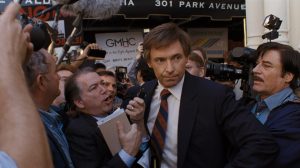 Faced with a fast-growing scandal, Colorado Senator Gary Hart (D) (Hugh Jackman, center) is swarmed by the press as he tries to salvage his 1988 presidential run in the new historical drama, “The Front Runner.” Photo by Frank Masi SMPSP, © 2018 CTMG, Inc.[/caption]
Faced with a fast-growing scandal, Colorado Senator Gary Hart (D) (Hugh Jackman, center) is swarmed by the press as he tries to salvage his 1988 presidential run in the new historical drama, “The Front Runner.” Photo by Frank Masi SMPSP, © 2018 CTMG, Inc.[/caption]
So how did all this come to pass? That’s where the conscious creation process comes into play, the philosophy that maintains we manifest the reality we experience through the power of our thoughts, beliefs and intents. In this case, though, it’s more precisely attributable to the un-conscious creation process, where our existence unfolds from beliefs of which we’re unaware or don’t fully understand, especially where the consequences are concerned.
Take, for instance, Hart’s personal situation. On the one hand, he wanted to be President. On the other hand, he wanted to indulge his romantic impulses. Considering that, it’s hard to fathom that there wouldn’t be any fallout for the first intended creation stemming from the fulfillment of the second. This is because, at his core, he apparently wanted to believe that he could have his cake and eat it, too, that he could continue to lead the unscrutinized life of a private citizen while in a high-profile, highly visible public position. His beliefs in creating both of these scenarios were based on un-conscious creation principles, undertakings focused on the results and not on whatever attendant outcomes may accompany them. Essentially he was faced with consequences that were incompatible with one another. And, in light of that, is it any wonder that he experienced the disappointing end game that he did, both in his political and private lives? The result is, sadly, self-sabotage, even though it arose unknowingly.
The same basic un-conscious creation principles that the senator tapped into individually were also accessed collectively by those in the political and media establishments. These acts of co-creation by default were collectively implemented to bring about the results they ushered in. Hart’s rivals for the presidency, for example, worked together to pounce on the candidate, using tactics that assured his demise, not realizing the long-term impact that such actions would have on the political landscape of the future. They helped to create – and establish – a form of politicking that has become the standard ever since. Did they intend to ruin Gary Hart alone, or did this practice represent a permanent change to be put into place? Even if it were only the former, the latter has been the result, something that they likely didn’t see coming. And, because of that, we now have the smear campaign electioneering that has become the norm.
Likewise, the methods employed by the media arose from reporters acting like pack animals seeking the fresh meat at any cost. Did they “just want the story,” or did they genuinely intend through their actions (and underlying un-conscious creation beliefs) to transform their profession into the tabloidized state it’s now in? Again, even if they didn’t seek the latter, that’s what we’ve now got thanks to how they brought this reality into existence.
In light of the foregoing, “The Front Runner” encourages us to take a look at these matters not only from a historical perspective, but also in contemporary terms, and, in both instances, we’re being asked to examine their underlying roots. Do we really want to continue dealing with the kinds of conditions in politics and the media that got their start during the Gary Hart campaign? What would it mean to get back to where things were prior to that turning point? In that sense, this film seeks to take on issues larger than just documenting the story of the senator from Colorado, and that’s certainly substantive food for thought.
However, as ambitions and well-intentioned as director Jason Reitman’s latest effort is, it struggles somewhat to pull it all together. Finding the right balance in both telling Hart’s story and addressing these big picture issues is a tricky undertaking, to say the least. The mix never quite gels as effectively as it could, and this lack of focus might leave some viewers wondering exactly what this movie is supposed to be all about. To its credit, the picture features fine performances by Jackman as the conflicted politician, Farmiga as the emotionally damaged wife and Simmons as the beleaguered campaign manager trying to salvage a lost cause that began with such hopeful optimism. It’s too bad that this release doesn’t quite live up to its hype – or its potential – given that, if handled more skillfully, it could have served as noteworthy social commentary that’s just as relevant today as it was about the period in question.
Shooting ourselves in the foot can carry many ramifications. In addition to being personally embarrassing or devastatingly hurtful, we run the risk of letting down others, ruining our expectations and theirs. Such acts of self-sabotage can be disastrous beyond what we can imagine, with implications that can have impact that’s both wide ranging and long tenured. This raises the importance of living up to our personal responsibility, making sure that we prepare for its implementation, as well as seeing it through. To do less runs the risk of regret, and, once that makes its presence felt, there may be little we can do to go back and rectify it. And what a terrible shame that would be.
Copyright © 2018, by Brent Marchant. All rights reserved.
Friday, December 7, 2018
This Week in Movies with Meaning




Wednesday, December 5, 2018
‘At Eternity’s Gate’ muses on the call to create
“At Eternity’s Gate” (2018). Cast: Willem Dafoe, Rupert Friend, Oscar Isaac, Mads Mikkelsen, Mathieu Amalric, Stella Schnabel, Vladimir Consigny, Emmanuelle Seigner, Lolita Chammah, Niels Arestrup, Anne Consigny, Amira Casar. Director: Julian Schnabel. Screenplay: Jean-Claude Carrière, Louise Kugelberg and Julian Schnabel. Web site. Trailer.
The power of creation is truly magnificent. Seeing intangible concepts materialize into tangible manifestations is a miraculous sight to behold. And it’s especially impressive when we consider the infinite range of possibilities that can be made real. However, for those of us who bring such outcomes into being, appreciating the range of what we can create can be overwhelming, perhaps even more than we can realistically handle. Getting a grip on such boundless possibilities could prove maddening, a challenge that confounded an accomplished painter who fought to bring his vision into being, a struggle chronicled in the new historical character study, “At Eternity’s Gate.”
Dutch post-impressionist painter Vincent van Gogh (1853-1890) (Willem Dafoe) led a difficult life. The expansively minded artist envisioned forms of expression that truly pushed boundaries of what was believed possible to achieve on canvas. He was able to conceive of images and styles never before dreamed of or attempted. And, with the encouragement of contemporaries like Paul Gauguin (Oscar Isaac), he earnestly sought to follow through on his vision.
However, van Gogh’s cutting-edge artistry was not well received, even in a supposedly progressive artistic mecca like Paris. His works were seen as too radical, even “disturbing,” and not even ardent supporters like Vincent’s brother, Theo (Rupert Friend), an art dealer, were able to successfully promote (or sell) his paintings. Consequently, at Gauguin’s urging, the misunderstood and underappreciated painter decided to pursue a fresh start in rural Arles in the south of France. This move was an attempt at providing him with ample sources of inspiration and new subject matter, a locale where he believed he could give life to his mission.
[caption id="attachment_10312" align="aligncenter" width="199"] Dutch painter Vincent van Gogh (Willem Dafoe) moves from Paris to rural Arles in the south of France to seek new sources of subject matter and inspiration in director Julian Schnabel’s “At Eternity’s Gate.” Photo by Lily Gavin, courtesy of CBS Pictures.[/caption]
Dutch painter Vincent van Gogh (Willem Dafoe) moves from Paris to rural Arles in the south of France to seek new sources of subject matter and inspiration in director Julian Schnabel’s “At Eternity’s Gate.” Photo by Lily Gavin, courtesy of CBS Pictures.[/caption]
Van Gogh’s relocation proved valuable when it came to providing him what he sought artistically; the sources of inspiration were everywhere in the people and landscapes. But, at the same time, the conservative, close-minded sensibilities of the locals caused him constant consternation. Not only was he criticized for his work, but he was also treated with open hostility for his unconventional creations, circumstances that made his struggle to fulfill his artistic vision ever more difficult. The situation improved for a time when Gauguin paid him a visit, but, when his peer announced plans to return to Paris, van Gogh descended into a form of madness, one that led him to inexplicably sever his ear.
Upon the recommendation of a compassionate physician (Vladimir Consigny), van Gogh entered treatment at a local mental institution. His time in confinement was meant to help him stabilize psychologically, particularly where defining his artistic sensibilities was concerned. He was allowed to paint during this time, and it was a period that proved to be quite prolific. But, in many ways, his tenure in the facility raised more questions than answering the ones he already had. With time to think under such controlled circumstances, he pondered theories of creativity, especially in terms of how they relate to the divine, the ultimate source of creation. And, even though he appeared calmer for having spent time in treatment, he was more perplexed than ever in terms of defining his vision and his relation to it.
Van Gogh’s thoughts on this subject were the topic of a profound conversation he had with a priest (Mads Mikkelsen) charged with deciding the painter’s fate. It was through this dialogue that the depth of Vincent’s feelings and insights became readily apparent. The thoughtfulness and profundity of his wisdom on these matters surfaced during their talk, his level of understanding on these matters effectively outshining that of his religious counterpart. Clearly there was much more going on in the mind of this artist than just figuring out how to apply pigment to canvas.
As for the source of Vincent’s troubles, it’s uncertain exactly what caused them. There are numerous suggestions that he suffered from some form of mental illness. It’s also been said that he drank too much and didn’t take proper care of his health. Or perhaps he was one of those visionaries who was ahead of his time and simply didn’t have the means to put his thoughts and ideas into an understandable form of expression. Whatever the cause, though, he found it perpetually frustrating to come up with an answer that suitably satisfied his hunger to create in ways that defined his outlook and sufficiently incorporated the breadth of his vision.
[caption id="attachment_10313" align="aligncenter" width="300"] Painter Paul Gauguin (Oscar Isaac, left), a colleague of Dutch artist Vincent van Gogh, offers friendship and guidance to his misunderstood peer in the new historical character study, “At Eternity’s Gate.” Photo by Lily Gavin, courtesy of CBS Pictures.[/caption]
Painter Paul Gauguin (Oscar Isaac, left), a colleague of Dutch artist Vincent van Gogh, offers friendship and guidance to his misunderstood peer in the new historical character study, “At Eternity’s Gate.” Photo by Lily Gavin, courtesy of CBS Pictures.[/caption]
Accomplishing such a task can be a tall order. We may very well lack the insights to connect the dots associated with this, or we may be deficient in our conscious wherewithal to sufficiently carry out this mission. That’s where it certainly helps to have an awareness of, and proficiency in, the conscious creation process, the philosophy that maintains we manifest the reality we experience through the power of our thoughts, beliefs and intents in conjunction with our divine collaborator. Van Gogh almost certainly never heard of this concept, but, based on what he struggled to understand, he obviously had a familiarity with its rudiments; he merely lacked the means to fully grasp or describe it. However, based on the works he created, he was obviously on the path to figuring it out, and, in doing so, he let his paintings do the talking for him.
To his credit, van Gogh clearly knew that there was a connection between what we create and the divine source that provides inspiration and makes the materialized outcome possible. And, because divine capabilities are so much more extensive than what most of us are able to envision, even capturing fleeting glimpses of the range of such possibilities can be overwhelming. Putting an awareness of this into words is like trying to express the nature of being in a sentence of 10 words or less, and the more one tries to do so, the more frustrating it can become, especially if we become obsessed at attempting it.
This would appear to have been van Gogh’s plight – he simply lacked the definition in his beliefs to ably express the limitless possibilities he intrinsically understood in a much more limited, finite context, no matter how creative he was. And it drove him mad. The feelings of “inadequacy” that he must have felt under such circumstances had to have been debilitating and eminently disappointing. It’s as if he was on the precipice of understanding everything but couldn’t sufficiently encapsulate its meaning. But, then, given the magnitude of what he was attempting to deal with, that was an inherently impossible task, at least to accomplish through conventional means.
[caption id="attachment_10314" align="aligncenter" width="300"] After a bout of madness that resulted in him severing his ear, painter Vincent van Gogh (Willem Dafoe) seeks to find peace of mind through his art in “At Eternity’s Gate.” Photo by Lily Gavin, courtesy of CBS Pictures.[/caption]
After a bout of madness that resulted in him severing his ear, painter Vincent van Gogh (Willem Dafoe) seeks to find peace of mind through his art in “At Eternity’s Gate.” Photo by Lily Gavin, courtesy of CBS Pictures.[/caption]
To compensate for such matters, one could attempt to overcome them by formulating different and more all-encompassing beliefs. But, again, given the scale of what van Gogh was trying to express, even this would likely be insufficient. So, given the challenge of a task like this, what is one to do? That’s where finding a new means of expression – and formulating the beliefs capable of supporting it – comes into play. And, for Vincent, that’s where his paintings took center stage.
It’s unfortunate that van Gogh’s art wasn’t appreciated by his contemporaries. However, those who create works on the cutting edge are seldom understood or taken seriously during their own lifetimes. Their creations are typically meant for generations yet unborn, for those who are subsequently able to look past conventional thinking and embrace a broader vision. In such instances, the creators of these pieces may no longer be around, but their works are, and, at such a time, these masterpieces can thus do what they were intended to accomplish in the first place – expand our collective outlook and urge us to think about art and existence in ways that our forerunners were incapable of envisioning or appreciating.
In that sense, van Gogh devised the beliefs and means to make such an outcome possible. For instance, he painted quickly, a skill that proved invaluable to someone who wanted to produce a prolific body of work during an unusually short life-span. He may not have consciously been aware of his early demise, but on some level he may have sensed the need for urgency in getting his work done during the time frame that he had available.
The speed and immediacy with which Vincent painted also suggests an innate understanding of the importance of creating in the moment, the only time over which we have any meaningful control over what we manifest. Capturing the essence of our beliefs in such fleeting instances is crucial to do them justice, something we mustn’t squander if we want our creations to authentically embody what we think, believe and feel about them in such a transitory time frame. Again, on some level, van Gogh grasped this and imbued himself with the skills necessary to make this possible.
Those who have ever been on the verge of breakthrough insights but have not been able to fully grasp or express their meanings can probably appreciate, at least approximately, what van Gogh went through. This film shows what it means to possess a special wisdom that struggles to be birthed into existence, one that’s difficult to put into words (or any other art form for that matter). The frustration in this can be exasperating, but, then, maybe the knowledge that’s meant to be imparted in these situations isn’t supposed to be chronicled in conventional terms. Perhaps van Gogh had trouble explaining himself and his vision through words because it wasn’t meant to be portrayed through that medium, that it was supposed to come through the paintings he created instead. Maybe he couldn’t appreciate this notion for himself, even though he could envision the finished products through which such wisdom was meant to be given life. Either way, we should be grateful for the gift of enduring beauty that he left us.
Despite some artistic self-indulgence, the inclusion of some sequences that feel unnecessarily padded and occasionally inexplicable choppy editing, this beautifully filmed paean from director Julian Schnabel is a fitting homage to the artistic genius. The filmmaker’s latest doesn’t follow the typical film biography format but, instead, examines the thoughts, beliefs and outlooks of the artist as depicted through the most significant events during the last years of his life, incidents based on van Gogh’s own writings and those of people who knew him. This exploration of the creative process as seen through the eyes of someone overwhelmed by its infinite and divinely inspired possibilities is a moving and thoughtful work that transcends the mere mechanics associated with the craft of painting (or any other art form for that matter). Dafoe gives a masterful, award-worthy performance as the tormented painter, effectively bringing to life the brilliance (and the madness) of this immensely talented, and immensely misunderstood, soul. “At Eternity’s Gate” certainly isn’t for everyone, but, for those who appreciate cinema that attempts to push boundaries and get below the surface of someone’s worldly persona, this offering does as fine a job as any in seeking to fulfill these goals.
The brush strokes we lay down on our personal canvases, whether or not such an act actually involves painting, provide us with an opportunity to give heartfelt expression to our respective creative visions. While it would be ideal that we understand what they mean, sometimes we can’t fully grasp them or the intent behind them. Perhaps, as van Gogh speculated, such creations aren’t meant for those of one’s time, that they’re intended for a future generation and that our role is to merely serve as the messenger for bringing them into being. What’s most important, though, is that we follow through on our mission, for what we manifest may have implications whose impact extends far beyond us and our stay on the planet. That was certainly true of van Gogh, and we should forever be grateful for the gifts he has given to the world.
Copyright © 2018, by Brent Marchant. All rights reserved.
Tuesday, December 4, 2018
Check out The Cinema Scribe
Tune in for the latest Cinema Scribe segment on Bring Me 2 Life Radio, Wednesday, December 6, at 12:45 pm ET, available by clicking here. And, if you don't hear it live, catch it later on demand!

Monday, December 3, 2018
‘Green Book’ applauds the power of collaboration, friendship
“Green Book” (2018). Cast: Viggo Mortensen, Mahershala Ali, Linda Cardellini, Sebastian Moniscalco, Dimiter D. Marinov, Mike Hatton, Von Lewis, Hudson Galloway, Gavin Foley, Rodolfo Vallelonga, Louis Venere, Johnny Williams, Iqbal Theba, Tom Virtue, Dane Rhodes, Brian Stepanek, Ninja Devoe. Director: Peter Farrelly. Screenplay: Nick Vallelonga, Brian Hayes Currie and Peter Farrelly. Web site. Trailer.
There’s nothing like a good friend. The value of associating with someone who cares deeply for you, and who has your back at times when it really counts, can’t be overestimated. And it can be especially satisfying when that friendship arises from an unexpected companion. So it is with a seemingly mismatched duo in the new, fact-based road trip buddy movie, “Green Book.”
Tony “Lip” Vallelonga (Viggo Mortensen) needs a job. The married father is put out of work when the New York nightclub where he works as a dapper bouncer announces plans to close for two months to undergo renovation. Unsure of what to do, Tony weighs his options, but there aren’t many viable work opportunities for an unemployed (and largely unskilled) job seeker looking to earn what it takes to support his wife, Dolores (Linda Cardellini), and his two sons, Nick (Hudson Galloway) and Frankie (Gavin Foley). And given that one can only rely on gambling and other dubious money-making schemes for so long, Tony has to find something to hold him over until the Copacabana reopens.
[caption id="attachment_10300" align="aligncenter" width="300"] Italian-American chauffeur Tony “Lip” Vallelonga (Viggo Mortensen, foreground) is hired to drive African-American pianist Dr. Don Shirley (Mahershala Ali, background) on a concert tour of the Deep South in 1962 in the excellent new biopic, “Green Book.” Photo courtesy of Universal Pictures, Participant Media and DreamWorks.[/caption]
Italian-American chauffeur Tony “Lip” Vallelonga (Viggo Mortensen, foreground) is hired to drive African-American pianist Dr. Don Shirley (Mahershala Ali, background) on a concert tour of the Deep South in 1962 in the excellent new biopic, “Green Book.” Photo courtesy of Universal Pictures, Participant Media and DreamWorks.[/caption]
With few prospects looming, Tony receives a call out of the blue about an opening for a job as a driver, something at which he’s relatively experienced. But the assignment turns out to be far from what he expects. Instead of making deliveries or chauffeuring passengers around town, he’s asked to be the driver for an accomplished African-American pianist, Dr. Don Shirley (Mahershala Ali), who’s about to embark on a concert tour of the American South. Tony would be responsible for transporting his passenger to his various concert dates, as well as a number of other miscellaneous tasks. And, given that he would be driving a Black passenger through this still-segregated region – an inescapable fact of life in 1962 – he would also be responsible for providing whatever “muscle” is called for to protect the accomplished virtuoso from the assorted rednecks and bigots they might encounter along the way. It’s a job duty that’s not specifically spelled out, but, considering that Tony’s a street-smart Italian-American from The Bronx, it’s assumed that this is something he’ll have no trouble handling.
At their first meeting, Tony and Dr. Shirley (whom Tony calls “Doc”) come across as an unlikely duo. Tony is earthy, unpretentious and a little salty. Doc, by contrast, is highbrow, erudite, persnickety and quick witted. But they also have traits in common – they’re both no-nonsense, demanding and clear about what they want. They also have their own “deficiencies” – Tony is often tactless and ill-mannered, while Doc is so aloof that he’s frequently clueless to the ways of the everyday world. And, given that Tony comes from a community not exactly known for its tolerance and open-mindedness at the time, it’s unclear how well he’ll get along with someone from a background for which he’s long harbored a less-than-subtle prejudice.
[caption id="attachment_10301" align="aligncenter" width="300"]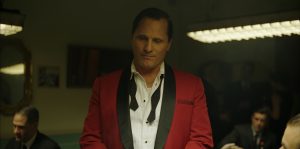 Bouncer Tony “Lip” Vallelonga (Viggo Mortensen) needs to find a new job when the nightclub where he works closes for renovation, as seen in the new fact-based comedy-drama, “Green Book.” Photo courtesy of Universal Pictures, Participant Media and DreamWorks.[/caption]
Bouncer Tony “Lip” Vallelonga (Viggo Mortensen) needs to find a new job when the nightclub where he works closes for renovation, as seen in the new fact-based comedy-drama, “Green Book.” Photo courtesy of Universal Pictures, Participant Media and DreamWorks.[/caption]
Tony’s also concerned about being away from his family for eight weeks. He worries that he’ll miss Dolores and the kids, and he’s uneasy that he might not be back home in time for Christmas. However, the promise of steady work for the entire term of his layoff, coupled with good money, proves to be too good to pass up. And so, in no time, Tony and Doc, along with fellow musicians Oleg (Dimiter D. Marinov) and George (Mike Hatton), hit the road for an odyssey that turns out to be quite eye-opening for all concerned.
To help them navigate their way through such unfamiliar territory, a representative of Doc’s record label gives the duo a copy of a special guide, The Green Book. This handbook contains listings of safe lodging, dining and business options for African-Americans in the age of Jim Crow laws, directing its readers to places where they will not be refused service, humiliated or threatened with violence. It’s a document that will come in quite handy for those times when Tony and Doc are forced to stay at different hotels or eat at different restaurants, a common practice during the age of segregation.
[caption id="attachment_10302" align="aligncenter" width="300"] As he readies to embark on a concert tour of the Deep South in 1962, pianist Dr. Don Shirley (Mahershala Ali) needs a driver to take him to his performance dates, as chronicled in the new, fact-based biopic, “Green Book.” Photo courtesy of Universal Pictures, Participant Media and DreamWorks.[/caption]
As he readies to embark on a concert tour of the Deep South in 1962, pianist Dr. Don Shirley (Mahershala Ali) needs a driver to take him to his performance dates, as chronicled in the new, fact-based biopic, “Green Book.” Photo courtesy of Universal Pictures, Participant Media and DreamWorks.[/caption]
Given the social and racial conditions of the time, Tony and Doc routinely encounter instances of the kinds of prejudices one would expect when traveling through the Deep South, incidents that get handled in various ways and resolved with varying degrees of success. But there are also a number of unexpected developments to come out of the trip, such as Doc bringing culture to someone who had never been exposed to it. Likewise, Tony gives his passenger an education in streetwise ways, as well as an introduction to many of the ways of everyday African-American life, something that the well-educated (but obviously sheltered) Doc had never experienced firsthand. It’s an exchange that proves to be quite enlightening for each of them – and that helps to forge a strikingly strong bond (and genuine friendship) between them, especially when each of them has to rely on the other for support and guidance through tricky or trying circumstances. And, based on how things started out, who would have thought that such an outcome would be possible?
[caption id="attachment_10303" align="aligncenter" width="300"]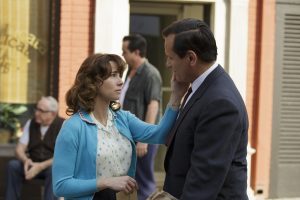 Driver Tony “Lip” Vallelonga (Viggo Mortensen, right) bids a tearful farewell to his wife, Dolores (Linda Cardellini, left), as he embarks on an eight-week road trip in the new comedy-drama, “Green Book.” Photo courtesy of Universal Pictures, Participant Media and DreamWorks.[/caption]
Driver Tony “Lip” Vallelonga (Viggo Mortensen, right) bids a tearful farewell to his wife, Dolores (Linda Cardellini, left), as he embarks on an eight-week road trip in the new comedy-drama, “Green Book.” Photo courtesy of Universal Pictures, Participant Media and DreamWorks.[/caption]
But, then, pushing past preconceived limitations is one of the results made possible by the conscious creation process, the philosophy that maintains we manifest the reality we experience through the power of our thoughts, beliefs and intents. It’s unclear if Tony or Dr. Shirley ever heard of this notion, but, based on how events transpired in their lives and relationship, it’s clear to see how it can work.
That’s especially true in light of where each of them started when their odyssey together began. Tony and Doc were, in many ways, worlds apart from one another, and their pairing for an eight-week road trip seemed questionable from the outset. However, as they interacted with one another and saw how each could benefit from the other’s presence, they formed that fast friendship that made their relationship work.
Such successful collaborative efforts are the basis of co-creation, where we pool our energies and efforts to forge beliefs that work symbiotically for mutual benefit. This can be seen in how Doc helped Tony “class up his act,” as it were. For instance, while on the road, Doc guided Tony in helping him write heartfelt love letters to Dolores, a practice that gave him a warm feeling inside and touched his lonely spouse deeply.
[caption id="attachment_10304" align="aligncenter" width="300"]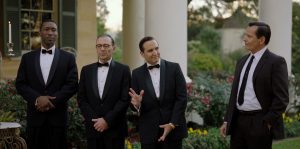 Driver Tony “Lip” Vallelonga (Viggo Mortnesen, right) looks after the needs of pianist Dr. Don Shirley (Mahershala Ali, left) and fellow musicians Oleg (Dimiter D. Marinov, second from left) and George (Mike Hatton, second from right) while on a concert tour of the Deep South in 1962 in “Green Book.” Photo courtesy of Universal Pictures, Participant Media and DreamWorks.[/caption]
Driver Tony “Lip” Vallelonga (Viggo Mortnesen, right) looks after the needs of pianist Dr. Don Shirley (Mahershala Ali, left) and fellow musicians Oleg (Dimiter D. Marinov, second from left) and George (Mike Hatton, second from right) while on a concert tour of the Deep South in 1962 in “Green Book.” Photo courtesy of Universal Pictures, Participant Media and DreamWorks.[/caption]
In returning the favor, Tony introduced Doc to down-to-earth pleasures he never experienced, especially those of mainstream African-American culture. He also showed the often-uptight artist how to loosen up and enjoy life, something Doc had considerable difficulty with before meeting his plainspoken, unassuming companion.
However, perhaps their greatest contribution to one another was having each other’s back. Whenever Doc was confronted with the bad intentions of assorted crackers or racist cops, Tony stepped in as a gallant protector. And, when Tony was faced with legal issues of his own, Doc tapped the considerable clout he had amassed with those in positions of power and influence. But, then, such outcomes were easy to come by because of the sincere bond that had formed between the two of them. They joined forces to help one another, and the results spoke for themselves. The power of beliefs is indeed impressive, capable of yielding tremendous creations. But the magnified power of jointly held beliefs is even more extraordinary, making possible truly magnificent results, true friendship being one of the most beautiful among them.
[caption id="attachment_10305" align="aligncenter" width="300"] Concert pianist Dr. Don Shirley (Mahershala Ali, seated) loosens up and learns the ways of mainstream African-American culture while on a road trip of the Deep South in the new, fact-based biopic, “Green Book.” Photo courtesy of Universal Pictures, Participant Media and DreamWorks.[/caption]
Concert pianist Dr. Don Shirley (Mahershala Ali, seated) loosens up and learns the ways of mainstream African-American culture while on a road trip of the Deep South in the new, fact-based biopic, “Green Book.” Photo courtesy of Universal Pictures, Participant Media and DreamWorks.[/caption]
This superb fact-based offering hits all the right notes without belaboring its message while effectively capturing the bond that grows between the film’s two protagonists. Director Peter Farrelly has taken a big step up with this release, revealing abilities not readily apparent in many of his previous works, most of which were nauseatingly silly comedies. The excellent performances by Mortensen and Ali are punctuated by a script that’s full of laughs, poignancy and heart without hitting viewers over the head. In many ways, this film feels reminiscent of “Hidden Figures” (2016), but that shouldn’t come as a surprise, given that one of this picture’s executive producers, Octavia Spencer, was also one of the protagonists of that release (which also starred Ali). If you liked that offering, you’ll love this one.
“Green Book” hasn’t particularly caught fire with viewers just yet, but I believe that’s about to change. This underrated gem deserves high marks and well-earned honors, which are now beginning to roll in. The film was recently named best picture by the prestigious National Board of Review, and Mortensen was named the organization’s recipient of its best actor award. The picture has also come up a winner at numerous film festivals. Look for it to pick up more accolades as awards season progresses.
Those who scoff at possibilities that don’t seem probable at first glance can learn a lot from relationships like those between Tony and Doc. Their eight weeks on the road together turned into a lifelong friendship, showing that what we often think of as unlikely can indeed become wholly possible thanks to the power of our beliefs. All we need do is open ourselves up to the idea – and then just let it happen.
Copyright © 2018, by Brent Marchant. All rights reserved.
